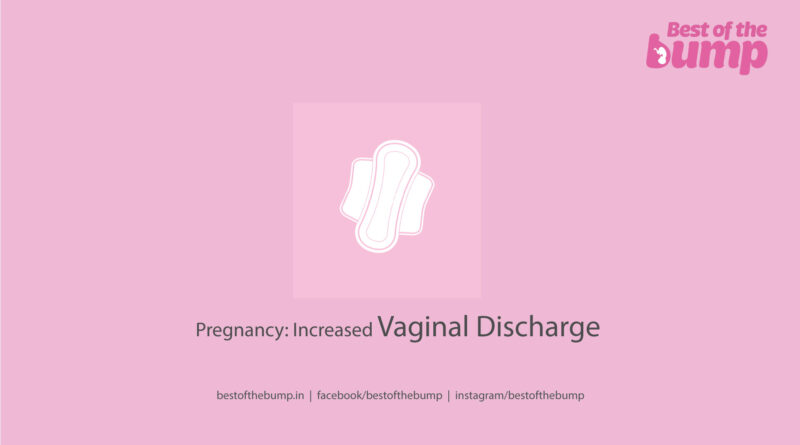Pregnancy: Increased Vaginal Discharge
Increased Vaginal Discharge pregnancy is a transformative and exciting time for expectant parents, but it also comes with a plethora of physical and emotional changes. One such change that often raises questions and concerns is the increase in vaginal discharge during pregnancy. In this comprehensive guide, we will delve into the topic of “Pregnancy: Increased Vaginal Discharge” and explore the various aspects of this natural phenomenon. From the causes and characteristics of normal discharge to potential concerns and when to seek medical attention, we aim to provide expectant parents with the necessary knowledge and reassurance for a smooth pregnancy journey.
Understanding Normal Vaginal Discharge during Pregnancy
Vaginal discharge is a common occurrence throughout a woman’s life, and it undergoes significant changes during pregnancy. Increased vaginal discharge is a normal and healthy aspect of pregnancy, primarily attributed to hormonal fluctuations and increased blood flow in the vaginal area.
Hormonal Influences on Vaginal Discharge

During pregnancy, hormonal influences play a significant role in the occurrence of increased vaginal discharge. The hormonal changes that take place in a woman’s body during pregnancy, particularly the rise in estrogen levels, contribute to alterations in the vaginal environment.
Estrogen is a crucial hormone during pregnancy as it prepares the body for childbirth and supports the development of the growing fetus. One of its effects is an increase in blood flow to the pelvic region, including the vaginal area. This heightened blood flow leads to greater vascularization and congestion in the vaginal tissues, resulting in an augmented production of cervical mucus.
The increased estrogen levels also lead to the thickening of the vaginal lining, known as the vaginal epithelium. This thickening creates a protective barrier, shielding the cervix and the developing fetus from potential infections. As the epithelium thickens, the glands in the cervix produce more mucus, further contributing to the augmented vaginal discharge.
The consistency of the increased vaginal discharge during pregnancy is often described as thick and creamy, similar to raw egg whites. This texture is attributed to the higher concentration of cervical mucus, which serves multiple functions in supporting a healthy pregnancy.
Firstly, the increased mucus creates a physical barrier in the cervical canal, protecting the uterus from ascending infections. Secondly, the mucus acts as a natural sperm-friendly environment during ovulation, facilitating the journey of sperm towards the egg for fertilization. Lastly, the mucus helps to maintain a stable and nourishing environment for the developing fetus.
increased vaginal discharge during pregnancy is a normal and natural process driven by hormonal influences, particularly the rise in estrogen levels. The thickening of the vaginal lining and the increased production of cervical mucus contribute to the unique characteristics of vaginal discharge experienced by expectant mothers. Understanding these hormonal influences can provide reassurance to pregnant individuals and help them differentiate between normal discharge and concerning symptoms that may require medical attention.
Characteristics of Normal Vaginal Discharge during Pregnancy
Increased vaginal discharge is a common and normal phenomenon experienced by many pregnant individuals throughout their pregnancy journey. Understanding the characteristics of normal vaginal discharge during this time can help alleviate concerns and ensure a healthy pregnancy experience.
Consistency
Normal vaginal discharge during pregnancy is typically thick and creamy, resembling the texture of raw egg whites. This increased consistency is due to the higher concentration of cervical mucus, which helps create a protective barrier in the cervical canal and protects the developing fetus from potential infections.
Odor
One essential characteristic of normal vaginal discharge is that it is usually odorless or may have a mild, slightly sweet scent. Foul-smelling discharge may indicate an infection and should be promptly evaluated by a healthcare provider.
Color
The color of normal vaginal discharge during pregnancy is generally white or off-white. While small amounts of blood may occasionally mix with the discharge, leading to a pink or brown tinge, large amounts of bright red blood may indicate a potential complication and require immediate medical attention.
Increased Volume
Pregnant individuals may notice a significant increase in the volume of their vaginal discharge, especially during the second and third trimesters. This increase is attributed to hormonal changes and an increase in blood flow to the vaginal area, which helps support the growing fetus.
Variable Flow
The flow of normal vaginal discharge can vary throughout the day and may be influenced by factors such as physical activity, sexual intercourse, or hormonal fluctuations. While it may be more noticeable after certain activities, it should not cause discomfort or pain.
Understanding the characteristics of normal vaginal discharge during pregnancy is crucial for expectant parents. Increased vaginal discharge is generally considered a healthy and natural aspect of pregnancy, attributed to hormonal changes and increased blood flow. However, any sudden changes in color, consistency, odor, or volume should be promptly discussed with a healthcare provider to rule out any potential concerns or infections. Maintaining good genital hygiene and seeking regular prenatal care can help ensure a smooth and safe pregnancy journey.
How Discharge Evolves throughout Pregnancy
During pregnancy, vaginal discharge undergoes significant changes, evolving in consistency, frequency, and volume as the pregnancy progresses. The increased vaginal discharge is a natural and essential part of the body’s preparation for childbirth and supporting the developing fetus.
First Trimester
In the early stages of pregnancy, many expectant parents may notice a slight increase in vaginal discharge. This is primarily due to hormonal changes, particularly an elevation in estrogen levels. The discharge during the first trimester is often thin and milky in appearance. While the increase may be subtle, it sets the foundation for more noticeable changes in the subsequent trimesters.
Second Trimester
As the pregnancy advances into the second trimester, the hormonal influence on vaginal discharge becomes more pronounced. Estrogen levels continue to rise, leading to an increase in blood flow to the pelvic region. This surge in blood flow contributes to a greater production of cervical mucus, which becomes more noticeable as a thick and creamy discharge. Some expectant parents may find that they need to use panty liners to stay comfortable and dry.
Third Trimester
The third trimester often brings the most significant changes in vaginal discharge. Many pregnant individuals experience a further increase in discharge volume, mainly as the body prepares for labor and childbirth. The consistency remains thick and creamy, and the discharge may appear more abundant after physical activity or sexual intercourse due to increased blood flow in the pelvic area.
Towards Labor
In the weeks leading up to labor, the vaginal discharge may undergo subtle changes. Some pregnant individuals may notice a slight pink or brown tinge in the discharge, commonly referred to as “bloody show.” This can be a sign that the cervix is beginning to soften and dilate in preparation for labor. However, it is essential to distinguish bloody show from any bright red bleeding, which could indicate a potential complication and require immediate medical attention.
It is important to note that while increased vaginal discharge is normal during pregnancy, any sudden, excessive, or abnormal changes in discharge should be brought to the attention of a healthcare provider. Regular prenatal check-ups offer an opportunity for expectant parents to discuss any concerns related to vaginal discharge and ensure a healthy and safe pregnancy journey.
Differentiating Normal Discharge from Concerning Signs
While increased vaginal discharge is considered normal during pregnancy, it is crucial for expectant parents to differentiate it from signs that may indicate potential issues.
Discharge with Blood Stains

During pregnancy, experiencing an increased vaginal discharge is normal due to hormonal changes and increased blood flow in the pelvic region. However, when this discharge is accompanied by blood stains, it can raise concerns for expectant parents.
Implantation Bleeding
In early pregnancy, some women may notice light spotting or blood-tinged vaginal discharge. This phenomenon is known as implantation bleeding and occurs when the fertilized egg attaches itself to the uterine lining. Implantation bleeding is typically lighter and shorter in duration than a regular menstrual period and is not a cause for major concern. However, it is essential to monitor the discharge and contact a healthcare provider if it persists or becomes heavier.
Cervical Irritation
Increased blood flow to the cervix during pregnancy can lead to cervical irritation, which may cause minor bleeding. This irritation can be triggered by sexual intercourse, vaginal exams, or the use of certain hygiene products. While cervical irritation is generally harmless, any bleeding should be discussed with a healthcare provider to rule out other potential causes.
Subchorionic Hemorrhage
In some cases, increased vaginal discharge with blood stains may be due to a subchorionic hemorrhage. This condition occurs when there is bleeding between the uterine wall and the gestational sac. Subchorionic hemorrhages can cause spotting or bleeding and may increase the risk of miscarriage. Pregnant individuals experiencing any bleeding should promptly inform their healthcare provider for evaluation and appropriate management.
Placental Abruption
While spotting or light bleeding can be normal, heavy bleeding with clots and severe abdominal pain may indicate a serious condition called placental abruption. Placental abruption occurs when the placenta partially or completely detaches from the uterine wall before delivery. This condition requires immediate medical attention, as it can be life-threatening for both the mother and the baby.
Miscarriage
In some unfortunate instances, blood-stained vaginal discharge may be a sign of an impending miscarriage. Miscarriages can present with varying degrees of bleeding, cramping, and tissue passing. If a pregnant individual experiences any signs of a miscarriage, they should seek immediate medical care and support.
while an increased vaginal discharge is a normal part of pregnancy, the presence of blood stains in the discharge can be a cause for concern. Implantation bleeding, cervical irritation, and subchorionic hemorrhages may cause minor spotting and are generally not worrisome. However, heavy bleeding, severe abdominal pain, or other concerning symptoms may indicate more serious conditions like placental abruption or miscarriage, necessitating immediate medical attention. Pregnant individuals should always communicate any unusual symptoms to their healthcare provider to ensure timely evaluation and appropriate care throughout their pregnancy journey.
Amniotic Fluid Leakage
Increased Vaginal Discharge, as the pregnancy progresses, the amniotic sac surrounding the baby may rupture, leading to a slow leak of amniotic fluid. This fluid can be mistaken for regular vaginal discharge, but it is crucial to distinguish the two. Amniotic fluid is typically clear and odorless and may continue to leak steadily, unlike regular discharge, which can vary in consistency and flow. If there is any doubt about whether the discharge is amniotic fluid, medical evaluation is imperative to rule out potential complications.
Abnormal Colors and Odors
Normal vaginal discharge during pregnancy is usually white or off-white and should not have a strong odor. If the discharge appears yellow, green, or foul-smelling, it could indicate an infection, such as bacterial vaginosis or a sexually transmitted infection like trichomoniasis. Seeking medical attention is vital to receive appropriate treatment and ensure a healthy pregnancy.
Coping with Increased Vaginal Discharge during Pregnancy
Managing increased vaginal discharge during pregnancy can be achieved through practical measures that promote comfort and hygiene. Here are some helpful tips:
Use Panty Liners
Increased Vaginal Discharge, pregnancy brings about various changes in a woman’s body, and one common occurrence is increased vaginal discharge. As hormonal levels fluctuate and blood flow to the pelvic region increases, expectant mothers often experience a higher volume of vaginal discharge. While this is generally normal and healthy, it can sometimes be uncomfortable. In such cases, using panty liners can be a helpful solution to manage increased vaginal discharge during pregnancy.
Understanding Increased Vaginal Discharge during Pregnancy
Increased Vaginal Discharge, the body undergoes significant hormonal changes, especially an increase in estrogen levels. This hormone is responsible for thickening the vaginal lining and stimulating the production of cervical mucus. As a result, pregnant women may notice an increase in vaginal discharge, which can vary in consistency and color.
The Role of Panty Liners in Managing Discomfort
Panty liners are thin absorbent pads designed to be worn in the underwear. They offer a practical way to manage increased vaginal discharge during pregnancy, providing comfort and peace of mind throughout the day. By using panty liners, expectant mothers can maintain cleanliness and prevent excess moisture, which may reduce the risk of irritation or infection.
Benefits of Using Panty Liners during Pregnancy
Absorbency
Panty liners are designed to absorb vaginal discharge, helping to keep underwear dry and minimizing any discomfort associated with wetness.
Freshness
By trapping moisture, panty liners can contribute to a feeling of freshness and cleanliness, especially during warmer weather or physical activities.
Protection from Stains
Increased vaginal discharge can sometimes lead to staining of underwear. Panty liners act as a barrier, protecting clothing from potential stains.
Comfort
Many expectant mothers find that using panty liners provides a sense of comfort and confidence, as they can go about their daily activities without worry.
Choosing the Right Panty Liners
When selecting panty liners for increased vaginal discharge during pregnancy, it’s essential to consider the following factors:
Size : Opt for panty liners that fit comfortably in your underwear without causing any irritation.
Absorbency: Choose panty liners with sufficient absorbency to manage your specific level of discharge.
Material: Look for panty liners made from breathable and hypoallergenic materials to minimize the risk of irritation.
Scent-Free: Avoid panty liners with added fragrances, as these can potentially cause irritation in the sensitive vaginal area.
Maintaining Good Genital Hygiene
Increased Vaginal Discharge, while using panty liners can be beneficial, it’s essential to remember that they are not a substitute for good genital hygiene. Pregnant women should continue to practice regular washing with mild, fragrance-free soap and water to keep the vaginal area clean and healthy. Avoiding douching and harsh cleansing products is also recommended, as they can disrupt the natural balance of vaginal flora.
Increased vaginal discharge during pregnancy is a normal and natural occurrence. For expectant mothers seeking comfort and convenience, panty liners offer a practical solution to manage the effects of higher vaginal discharge. By choosing the right panty liners and maintaining good genital hygiene, pregnant women can enjoy a more comfortable pregnancy experience while staying fresh and confident throughout the day. As always, if there are any concerns or questions about vaginal discharge or overall pregnancy health, consulting a healthcare provider is essential for personalized guidance and care.
Practice Good Genital Hygiene
Maintain good genital hygiene by washing the vaginal area with mild, fragrance-free soap and water. Avoid using harsh products or douching, as this can disrupt the natural balance of vaginal flora.
Wear Loose, Breathable Clothing
Choose loose-fitting, breathable cotton underwear and clothing to allow air circulation, which helps reduce moisture and prevents potential infections.
Avoid Tampons
During pregnancy, it is advisable to avoid using tampons, as they can introduce bacteria into the vagina and increase the risk of infection.
Recognizing and Treating Infections
Despite taking preventive measures, some pregnant individuals may still develop vaginal infections. Understanding the signs and seeking timely treatment is crucial for maintaining maternal and fetal well-being.
Yeast Infections
Yeast infections are relatively common during pregnancy, and they can cause itching, redness, and a thick, cottage cheese-like discharge. If any symptoms of a yeast infection are present, consult a healthcare provider for proper diagnosis and treatment. Over-the-counter antifungal creams may not be safe during pregnancy, so medical guidance is essential.
Bacterial Vaginosis
Bacterial vaginosis (BV) is another common vaginal infection characterized by a thin, grayish-white discharge with a fishy odor. BV during pregnancy requires medical attention, as it has been associated with an increased risk of preterm labor and other complications.
Sexually Transmitted Infections (STIs)
If there is a suspicion of an STI, it is crucial to get tested and treated promptly. Untreated STIs during pregnancy can pose significant risks to both the mother and the baby.
When to Contact Your Healthcare Provider
While increased vaginal discharge is generally normal during pregnancy, certain situations warrant immediate contact with your healthcare provider.
Excessive Discharge
If the volume of discharge is excessive or causes persistent discomfort, it is essential to consult your doctor. They can assess whether there is an underlying issue that requires attention.
Unusual Colors and Odors
If the discharge appears yellow, green, or has a foul odor, or if it is accompanied by itching, burning, or irritation, medical evaluation is necessary to identify and treat potential infections.
Sudden Increase in Discharge

A sudden, significant increase in vaginal discharge could be a sign of amniotic fluid leakage, especially if it continues to flow even after changing positions. In such cases, seek immediate medical attention to avoid potential complications.
Increased vaginal discharge is a natural and common occurrence during pregnancy, attributed to hormonal changes and increased blood flow in the vaginal area. Understanding the characteristics of normal discharge and being able to differentiate it from concerning signs is vital for expectant parents. Practicing good hygiene, using panty liners, and seeking prompt medical attention in case of infections or unusual symptoms can help ensure a healthy and comfortable pregnancy journey. As always, regular prenatal check-ups and open communication with healthcare providers are essential for a safe and joyful pregnancy experience.
See This Also




